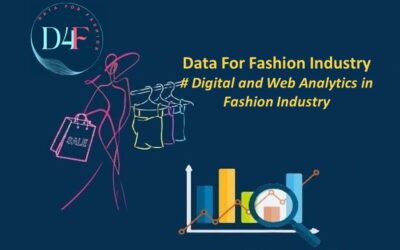Digital Analytics:
Digital analytics, which includes web analytics, is just one part of a larger concept known as behavioral analytics. Behavioral analytics gives us insights into how customers interact with digital channels like websites, e-commerce, mobile apps, chat, email, connected products/Internet of Things (IoT) etc.
Web analytics:
Web analytics is like keeping an eye on what’s happening on your website. It involves gathering and studying lots of information about what your visitors are up to: where they’re from, what they’re interested in, and more. The aim is to figure out what they might do next. Nowadays, there’s a focus on understanding how people use the website and what patterns they follow.
Many companies use website analytics to learn about how people use their websites better. This helps them make the website more enjoyable for users and improve important measures like how many people buy something or sign up for newsletters.
Indeed, web analytics is the top choice for online marketers to track the performance and success of their marketing campaigns.
Additionally, it empowers us to understand the interest in our product simply by tracking where the traffic comes from. Before the digital age transformed marketing practices, businesses relied on manual methods. In traditional retail stores, employees were often tasked with manually counting the number of customers entering the store by clicking on a counting device.
Experiencing rapid growth of e-commerce and pure play e-retailers in the fashion industry, every website has a tracker keeping tabs on its daily visitors. However, the market is shifting towards lesser-explored aspects of web analytics, such as event tracking, to delve deeper into user experience (UX), user interface (UI), A/B testing attribution, and predictive analytics.
– a pure player operates their business in the online market only. Example: The German E-store Zalando.
Integrating digital analytics in the fashion industry may take years to build a well-tuned system from Ground Zero. So, without wasting time & money all retail e-commerce platforms have connected with web analytics platforms such as Google Analytics and Adobe Analytics so that retailers can easily adopt and combine digital analytic tools.
Implementing Digital Analytics in Fashion:
Let’s see how digital analytics solves some problems and its connection to data science and artificial intelligence. To describe, I will discuss below areas of digital analytics in this post:-
- Experience Analytics
- Attribution Models
- Clickstream Analytics
- A/B Testing
Main three touch points of digital analytics:-
- Desktop
- Mobile
- Web app
Experience Analytics:
Experience analytics is all about collecting, analyzing, and utilizing customer-specific data to make their buying process or using your services better.
Instead of just keeping an eye on basic numbers like how many people buy or stop using your stuff, experience analytics looks at the entire journey of customers.
Experience analytics focuses on different points mentioned above in the customer journey and optimizes those experiences to drive conversions, reduce friction points, and grow revenues.
Two of the most renowned experience analytics software are:-
- Full story
- Content Square
Attribution models:
Customers may receive ads or promotions from different marketing channels but which channel leads to a conversion i.e: the customer buys the product or service?
In digital analytics, an attribution model refers to methods used to determine how credit for conversions or other desired actions is assigned to different marketing channels or touchpoints along the customer journey. Attribution models help businesses understand the impact of their marketing efforts and allocate resources effectively.
-a conversion refers to the completion of a desired action by a website visitor. Examples of conversions include making a purchase, filling out a contact form, signing up for a newsletter, registering for an event, subscribing to a service
Even though web analytics and marketing have improved, retail and fashion companies still struggle with attribution models. Many rely solely on last-click conversion attribution, which might limit the depth of analysis by focusing only on the final interaction. This approach risks overlooking important information that occurs throughout the customer journey. There’s a big opportunity to use smarter analytics to understand customers better and improve how we sell things online.
Web analytics platforms provide numerous attribution models, such as data-driven attribution and custom attribution. Both of these models utilize statistical techniques to measure and forecast the revenue generated from various channels.
Clickstream analytics:
The next big thing in web analytics is called Clickstream analytics. It’s all about tracking and analyzing how people move around websites. Basically, it looks at the data in web server logs to see what visitors are doing on a site. This helps understand user behavior, like which pages they visit, how long they stay, and when they leave.
Clickstream analytics is focused on individual user sessions to see how good the experience is. Using this info, it creates models to predict if a visitor will do something specific, like buy something or just browse. This helps decide things like how often ads should be shown, how they should look, and how much they should be seen.
In industries like fashion, this kind of analysis is super important because it helps understand consumers better and saves money on retargeting. So, e-commerce companies need to make sure their websites are easy for visitors to use.
Let’s discuss one problem in a website which is an anomaly.
An anomaly can occur due to internal issues like too many people visiting a website at once can cause errors, while external attacks from someone trying to disrupt the platform can also be a problem. Because of these various factors, spotting anomalies becomes a complex task.
Machine learning steps in to help out in this situation. Using an algorithm, we can identify users who are acting strangely on our website. Basic solutions often send alerts when there are significant deviations from the usual trends of important performance indicators.
Google has developed a solution for this issue. The algorithm starts by selecting a period of past data to train a forecasting model. Then, it uses the Time series model on the historical data to predict the value of the latest data point in the time series. Finally, it identifies anomalies by conducting a statistical test with predetermined thresholds based on the data. This is how Google deals with website malfunctions or suspicious activities.
Moving on, the last aspect of web analytics we’ll discuss is multivariate testing, also known as AB testing. Here, we’re looking at how making small changes to features can impact user behavior. By comparing two slightly different versions of the same thing (let’s call them A and B), even a small change can cause noticeable differences in how users interact. This method helps figure out which version performs better in specific situations. In digital analytics, A and B could represent two versions of a feature on a website.
Let’s see one example from the world of fashion.
Zalora, the online retailer established in 2012 has been offering flexible return policies and free delivery. Recently, however, Zalora’s customer service team has discovered that many visitors did not know about Zalora’s free return and free delivery options.
They thought the problem was that customers couldn’t easily see the valuable features on the website. So, Zalora decided to improve the product page by running an AB test. They created two versions of the same design and collected customer feedback for a few months.
- Version A had the original design with the word “free” as a green cell to the Action button on the far right side of the page.
- Version B had a small change – the word “free” was moved to a more central position next to the item’s image.


After studying user behavior closely, version B was found to increase checkout rates, making it the preferred option. As a result, the change was made permanent.
All fashion brands are employing AB testing methods to offer better experiences to customers through data-driven approaches. Ultimately, these tests help retailers comprehend user engagement and satisfaction with different online features.
Fashion e-commerce sales keep going up, and with more pure players, it’s tough to keep your place in the market. This competition means companies need a strong foundation to grow. That’s where web analytics comes in. It helps businesses make smart decisions for growing their online presence.
Collecting data is only half the battle; you need experts to analyze it properly. But finding skilled web analysts is tough because technology is getting more complex. Fashion brands need people who can understand the data and use various analytics tools. If you’re skilled in web analytics, you’re likely to find job opportunities in any company that operates online.
Python Implementation for Clickstream Analytics & AB testing:
To understand how we can use the machine learning model to analyze sales by clickstream analytics, please click on the below link TBC
Let me give you some snapshots here for your understanding.

